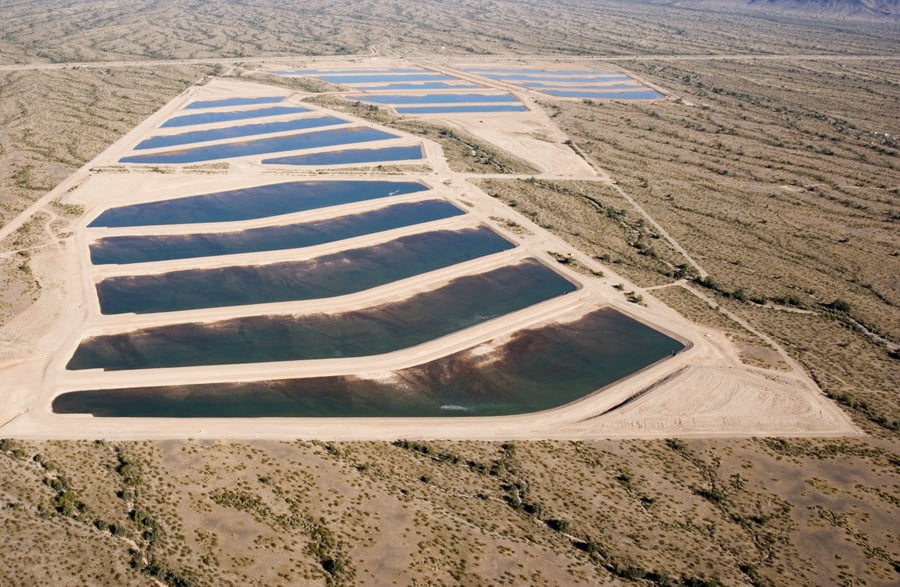The California Department of Water Resources (DWR) has released their reviews on the Groundwater Sustainability Plans (GSP or Plan) submitted by Groundwater Sustainability Agencies (GSAs) in January 2020. These first Plans were developed for critically overdrafted basins that must overcome significant water resources challenges to achieve sustainability by 2040 in accordance with the Sustainable Groundwater Management Act (SGMA). The first and second rounds of DWR assessments identified deficiencies in most Plans and recommended improvements to technical analysis, data collection and use, and interpretation of current information, as they relate to SGMA Legislation and GSP Regulations.
One of the key mistakes DWR observed in the first GSPs is that GSAs focused too much on balancing the groundwater budget to determine basin sustainability. Although a water budget is a great tool to understand overall basin conditions, it only provides a general view of the amount of water available in the basin; it does not provide an indication of localized impacts on beneficial users, such as dry domestic wells. Sustainable groundwater management is only possible with a set of policies informed by Sustainable Management Criteria (SMC), measured with a well-developed monitoring network, and supported by data and science.
Four major technical aspects of the GSP reviews that need to be considered by GSAs for implementation and to correct deficiencies are as follows:
- Water levels and groundwater storage
- Land subsidence
- Interconnected surface water
- Data gaps
In many cases, the SMC developed for the six sustainability indicators were not supported by robust data or analysis and failed to consider all beneficial users that may be impacted by setting policies on these criteria.

Sustainability Indicators
1. Water levels and groundwater storage
Water levels or groundwater elevations are generally the most straightforward and commonly understood metrics that groundwater managers rely on because they are easily measured in wells, and the effect of chronic lowering of groundwater levels translates directly to failing pumps or dry wells. However, setting criteria such as minimum thresholds requires a process that includes various stakeholders and all affected beneficial users. Setting minimum thresholds for chronic lowering of groundwater levels requires the following:
- Identifying the appropriate representative monitoring wells
- Evaluating historical water levels at those wells
- Determining what past levels were too low and have resulted in significant and unreasonable impacts on beneficial users
- (Optional) Running simulation models to determine what the water levels may be in the future with projected conditions including land use changes and climate change.
DWR’s main concerns on chronic lowering of groundwater levels is that GSAs did not adequately take domestic well users into consideration when setting minimum thresholds. One challenge is that domestic well information such as location, depth, and screen intervals is not well documented. Nonetheless, an initial analysis can be done by intersecting the domestic well density and depth information from DWR with a contour map of groundwater elevation minimum thresholds. This approach provides an initial estimate of the percentage of domestic wells that would be impacted if all representative monitoring wells reach the minimum threshold at the same time, as a worst-case scenario. This provides a good starting point for beneficial users to understand what the minimum thresholds would represent, should they be reached, or worse, exceeded.
Groundwater storage can be directly correlated to groundwater elevations. Many GSPs used groundwater levels as a proxy for measuring change in groundwater storage, which is a convenient way to use the same measurement and representative wells for two different sustainability indicators. The challenge is to prove that the minimum thresholds set for water levels are adequate for groundwater storage and ensure that total groundwater pumping in the basin does not exceed the calculated sustainable yield.
2. Land subsidence
Land subsidence becomes an undesirable result if it affects land surface uses such as cracked levees, reduced canal conveyance capacity, or structural integrity of bridges and buildings. SGMA regulates subsidence that is due to groundwater pumping (and not due to other effects, such as from tectonics) and irreversible (or inelastic). Therefore, under SGMA, subsidence can be halted through management of groundwater withdrawals and thus, water levels, but it cannot be reversed. SGMA’s intent is to avoid or minimize land subsidence impacts on land surface beneficial uses, which has not been appropriately addressed in some GSPs, according to DWR’s reviews. DWR indicated the need for “additional analysis to understand the significant correlation between groundwater levels and land subsidence, particularly where groundwater levels will continue to decline” (DWR presentation to the Association of California Water Agencies) to avoid significant impacts on land users.
3. Interconnected surface water
Interconnected surface water (ISW) with groundwater is an important aspect of sustainable groundwater management, as it connects above and below the groundwater source and affects several different beneficial users of both groundwater and surface water. ISW can induce stream depletion when nearby pumping causes surface water to flow toward groundwater. ISW is also the most complex aspect of SGMA, the least understood, and the one that GSAs most struggle with in developing appropriate policies. It is not a coincidence that many GSPs failed to follow the regulations for ISW, which require an estimation of “the quantity and timing of depletion of interconnected surface water systems due to groundwater pumping.” This effect is very difficult to measure directly in the field, and modeling tools are often used to assess the following:
- Where surface water and groundwater are connected
- If surface water is losing or gaining relative to shallow groundwater, and
- The volume or rate of water exchange between surface water and groundwater.
“By 2025, provide the specific methodology to quantify stream depletion, including the location, quantity, and timing of depletion of interconnected surface water.”
However, it is more difficult to establish when and where the exchange between surface water and groundwater is due to pumping and if that exchange, when a stream is losing water to groundwater, constitutes a significant and unreasonable effect on beneficial users, including groundwater-dependent ecosystems. Groundwater models have significant uncertainty on the representation of surface water systems, and most numerical groundwater models operate on a monthly time step, while surface water flow is best measured or assessed on a daily or hourly time step.
The lack of coupled flow gage data and shallow groundwater levels is a challenge to establishing groundwater levels as a proxy for ISW SMC. Nonetheless, while most GSPs did not adequately evaluate ISW, SGMA legislation does provide for additional time to further assess it. According to a December 2021 DWR presentation to stakeholders, GSAs “must provide the specific methodology to quantify stream depletion, including the location, quantity, and timing of depletion of interconnected surface water, by 2025.”
4. Data gaps
Many GSAs struggled with the lack of adequate data to develop their first comprehensive GSP. Data gaps mostly focused on the following:
- Geologic and hydrogeologic data to understand stratigraphy and groundwater flow between aquifer units
- Groundwater pumping; with some exceptions, metering of agricultural wells is not required in most of California
- Groundwater levels at an adequate geographic and depth distribution within a basin
- Surface water flow and stage gaging
- Location and health of groundwater-dependent ecosystems and instream flow needs by surface water species in ISWs
DWR recognizes that these first GSPs did not have adequate information for complete analyses but stressed that data gaps should be explicitly identified and a plan developed to fill them over a set period of time. GSAs are asking DWR and other state agencies to help fill some of the regional data gaps. DWR has put a number of programs in place to help address data gaps, such as technical support services to drill monitoring wells and AEM surveys. Additional support will be needed on other data gap areas, such as stream gages.
An important positive effect of the development of GSPs is that is brought together beneficial users in each basin, opened lines of communication, provided education on very technical and complex aspects of groundwater management, and provided a forum for data and information exchange at the local level and with state agencies. Everyone involved in developing the 2020 and 2022 GSPs has contributed greatly to helping shape the future of sustainable groundwater management in California.
For more information on the DWR reviews, visit:
GSP Status Summary on SGMA Portal: https://sgma.water.ca.gov/portal/gsp/status
First Round of Reviews: https://water.ca.gov/News/News-Releases/2021/June-21/DWR-Release-First-Assessments-of-Initial-Groundwater-Sustainability-Plans
Frequently Asked Questions on Next Steps: https://water.ca.gov/-/media/DWR-Website/Web-Pages/Programs/Groundwater-Management/Sustainable-Groundwater-Management/Groundwater-Sustainability-Plans/Files/GSP/GSP-Incomplete-Assessment-FAQ.pdf
Second Round of Reviews: https://water.ca.gov/News/News-Releases/2021/Nov-21/DWR-Releases-Second-Round-of-Assessments-of-Groundwater-Sustainability-Plans
About the Authors
Lisa Porta, P.E., is a senior water resources engineer in M&A’s Sacramento office. She is the project manager of several GSPs and has collaborated with SGMA professionals across California.
Derrik Williams, P.G., C.Hg., is a principal hydrogeologist and director of California business development in M&A’s San Luis Obispo office. He worked closely with the California Department of Water Resources to develop the state’s SGMA implementation process and has overseen M&A’s work on several GSPs.










